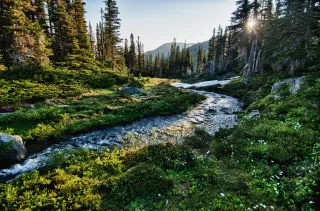Active banners: 0 Visible banners: 0
Disappearing Winter Snowpack
Provided by: The National Environmental Education Foundation (NEEF) |Published on: May 20, 2021
Articles/Websites
6789101112
Synopsis
- This article explains how climate change has caused a decrease in snowpack in the western United States.
- Students will learn about the importance of snowpack to surrounding ecosystems, municipal water supplies, agriculture, and hydropower generation.

Subjects: Earth and Space Sciences
Authors: Nick Bradford, The National Environmental Education Foundation (NEEF)
Region: USA - West
Languages: English
Teaching Materials
Positives
- This article analyzes the impacts of the reduced snowpack.
- The data and images provided in the article are great visuals to have students interpret and discuss.
Prerequisites
- Students should understand how hydropower works.
Differentiation & Implementation
- Science classes can use this article during a unit on the water cycle. Students could identify the different sources of water for drinking, power generation, and recreation.
- Teachers can ask students to think about the energy sources that are likely to replace hydropower if the snowpack continues to disappear. Students could discuss which of the alternative energy sources are sustainable.
- Math or science classes can use the map showing trends in snowpack in the Western US to discuss percent change. Teachers should reinforce the fact that positive percent change is in blue and that negative percent change is in red and explain what this means for snowpack trends.
- As an extension, have students use this interactive mapping tool to investigate changes in precipitation around the world and then come up with an action plan for adapting to this side effect of climate change.
Scientist Notes
Teaching Tips
Standards
Resource Type and Format
About the Partner Provider

National Environmental Education Foundation
The National Environmental Education Foundation (NEEF) is the nation's leading organization in lifelong environmental learning, creating opportunities for people to experience and learn about the environment in ways that improve their lives and the health of the planet. NEEF is a non-partisan, non-advocacy organization working to make the environment more accessible, relatable, relevant, and connected to people's daily lives.
All resources can be used for your educational purposes with proper attribution to the content provider.
Teaching Materials
Educator Support
My Account







